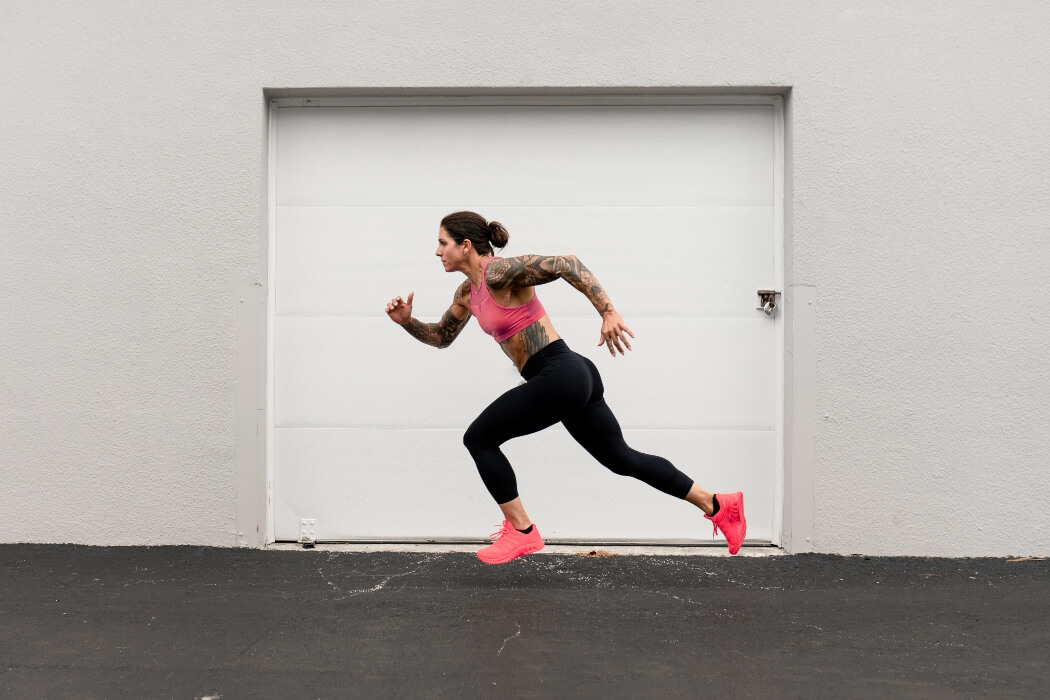
The evolution of fitness never stands still, and as elite athletes continue to challenge the status quo, their training principles trickle down to people like you and me on a mission to become the fittest version of ourselves.
Hybrid Training is a relatively new term in the fitness space, but one that continues to gain popularity and rightly so. Unlike traditional training that focuses on either muscle-building or cardio, hybrid training integrates both to create versatile athletes who can handle various physical challenges.
Whether you're a runner wanting to add strength or a weightlifter seeking endurance, hybrid training offers a pathway to becoming fit, resilient and ready for anything.
We’re not saying hybrid training is easy, but there’s no doubt that this style of training can take your fitness to the next level.
In this article we’ll cover what hybrid training entails, its benefits, essential tips and how to start your hybrid training journey.
WHAT IS HYBRID TRAINING?
Hybrid training combines endurance (for example running, cycling or swimming) with strength training (such as lifting weights or bodyweight exercises) to develop a balanced fitness base.
Hybrid training is perfect for those looking to become well-rounded athletes rather than specialists in one discipline. If you've ever admired an athlete who can run a marathon one day and deadlift twice their body weight the next, they’re likely following a hybrid approach.
Unlike training styles that focus exclusively on one fitness dimension, hybrid training programmes aim to maintain and improve both strength and cardiovascular capabilities simultaneously.
WHAT IS A HYBRID ATHLETE?
By engaging in hybrid training, you won’t achieve maximum strength or ultra-endurance levels, but rather develop a high level of overall fitness that enhances daily functionality and athletic versatility.
Elite athletes in competitions such as Hyrox and Ironman are prime examples of hybrid athletes, as they train across multiple disciplines to excel in events that require both power and stamina.
There’s no standard approach to hybrid training, so outlining your goals and preferences can help guide you to a more personalised hybrid training programme and determine how you split your training days. Hate running? Jump on the bike or dive in the pool.
We’ll talk a little more about building your own hybrid training programme below.
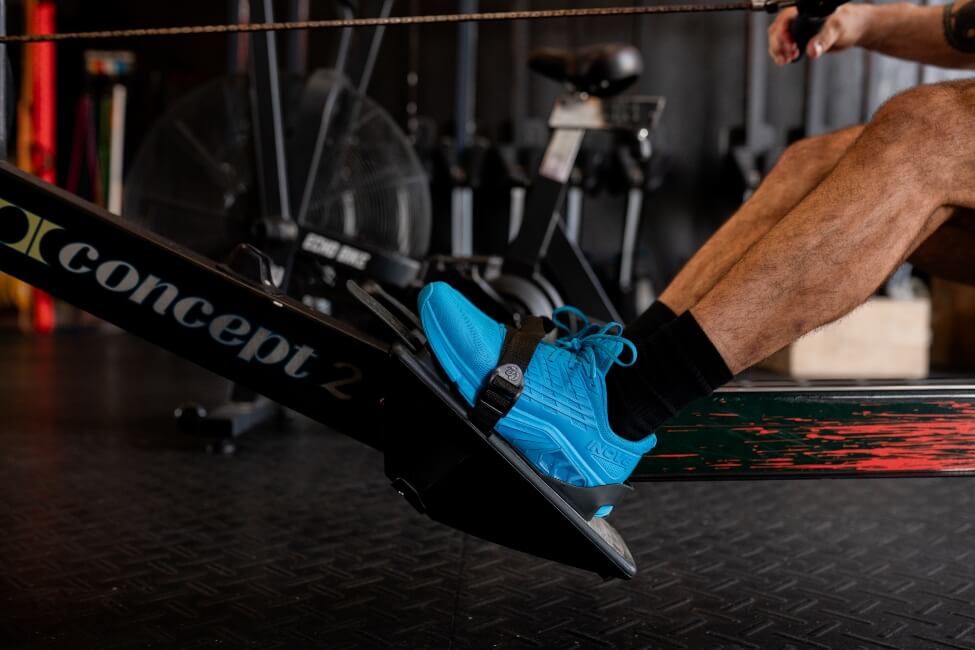
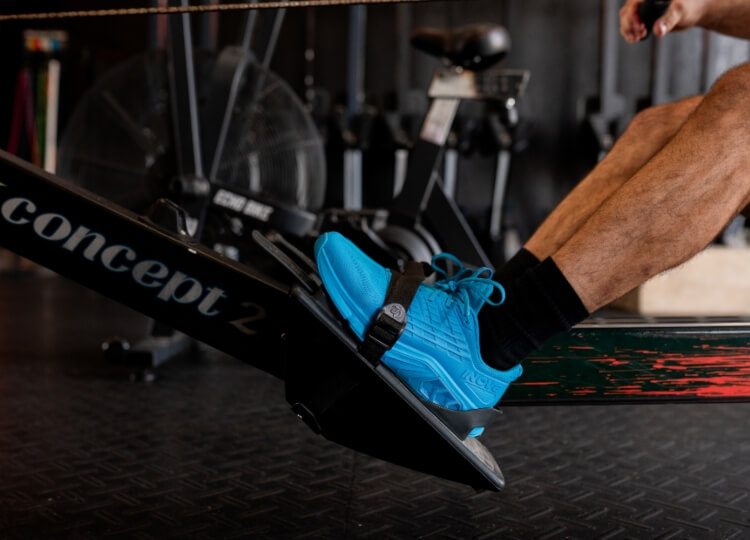
WHAT ARE THE BENEFITS OF HYBRID TRAINING?
If chasing all-round fitness is your goal, then hybrid training ticks plenty of boxes when it comes to maximising the possible health and fitness benefits from exercise.
Each discipline within hybrid training comes with a whole host of benefits, both physically and mentally, from reducing your risk of injury, to enhancing your mental health. Combining strength and endurance workouts as part of your training programme allows you to reap the benefits associated with both exercise disciplines, enhancing overall performance.
THE BENEFITS OF A HYBRID TRAINING PROGRAMME
Improved Overall Fitness
Improved aerobic endurance? Tick. Enhanced physical strength? Tick. Hybrid training builds strength and endurance simultaneously, and has been shown to produce significant improvements in cardiometabolic factors, including blood pressure, cholesterol levels and cardiorespiratory fitness.
Enhanced Athletic Performance
Hybrid training enhances athletic performance by improving both power and endurance, creating a higher level of physical preparedness.
Injury Prevention
Training across multiple disciplines improves muscle balance, strength, power, endurance and joint stability, which helps reduce the risk of injuries common in single-discipline training.
Improved Body Composition
Cross-sectional studies have revealed remarkable results when it comes to functional fitness and body composition, with ‘better functional fitness being connected with a higher proportion of lean body mass’. By alternating between high-intensity cardio, endurance and resistance training, the hybrid approach is effective for reducing body fat while building lean muscle, enhancing overall body composition.
Mental Resilience
Switching between different training styles can increase mental resilience, as you learn to tackle various physical challenges. Studies have also shown a relation in regular exercise and improved mental health, leading to a better quality of life.
Time Efficiency
A hugely overlooked benefit is a greater use of training time. Busy lives can result in workouts being shortened or even missed entirely. A well thought out hybrid training programme can help us get more done, in less time – it’s a win-win.

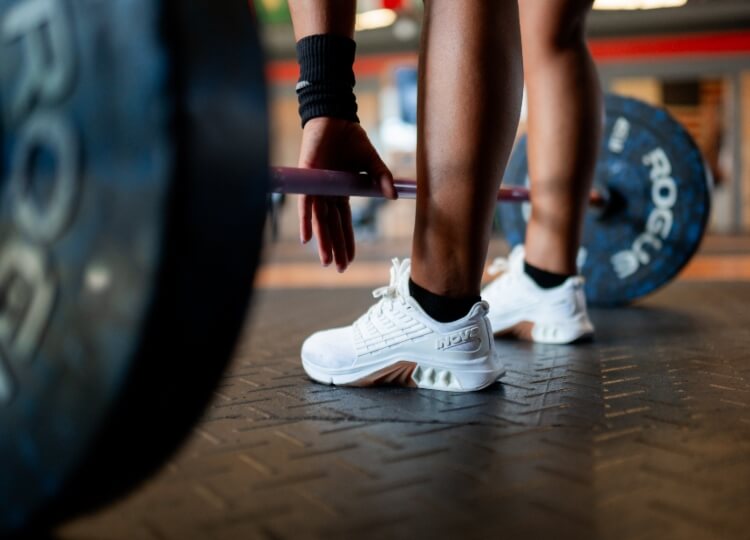
WHAT TO INCLUDE IN A HYBRID TRAINING PROGRAMME
Now we understand how you may benefit from following a hybrid training programme, it’s time to talk about the key elements of a hybrid programme.
One of the great things about hybrid training is its customisability. As your training goals change, your hybrid training programme can adjust with you.
There’s no denying that a hybrid training programme is physically demanding and it may take some time for you to adjust to this training style. This is especially true for beginners, or athletes less conditioned in multi-discipline training.
Generally, a hybrid training programme consists of three core elements:
1. Resistance Training
Resistance training is an essential part of a hybrid training programme, helping you to develop strength, muscle mass and avoid injury.
Compound exercises, such as squats, deadlifts and bench press will take up the main focus during these sessions, recruiting multiple muscle groups to improve overall strength.
Accessory and isolation exercises may become utilised as your programme develops, or your goals change. For example, if you training programme places more focus on upper body strength, isolation exercises may be added to supplement compound movements.
2. Endurance Focus
Aerobic activities like running, cycling, or swimming play a vital role in hybrid training and in your overall health. Including regular endurance sessions can improve cardiovascular fitness, supporting your body’s ability to sustain activity over time.
Endurance training involves putting in those long runs, rides or swims – training your aerobic system to work continuously under demand. If you’re new to endurance training, start small and build your way up – there’s no cheating or short-cut in the fitness game.
Struggle to find time? Here are 10 ways to fit running into a hectic lifestyle.
3. Functional Fitness
Arguably the most fun, but also the toughest. Functional fitness consists of high intensity interval training. Exercises such as kettlebell swings, burpees and sled pushes improve both strength and cardiovascular endurance, training the body to work at a high intensity under load – making them ideal for hybrid athletes.
You may choose to work on functional movements individually, or combine multiple exercises into a circuit for added intensity (think WODs, AMRAPs and and EMOMs).
This element of training may also include shorter bouts of cardiovascular intervals, making use of erg machines and treadmills alongside functional movements to create physically demanding sessions.
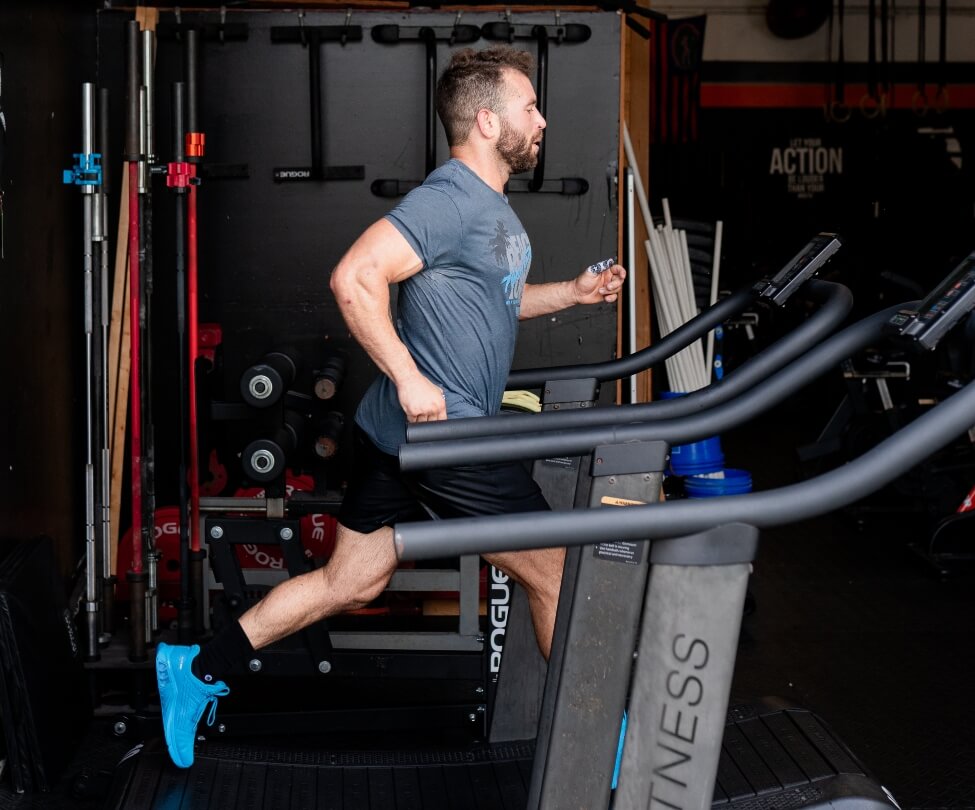
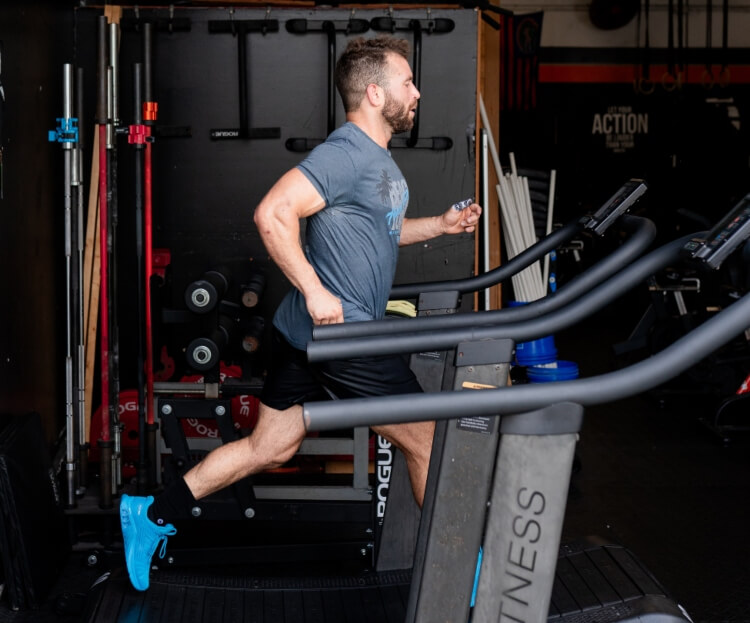
EXAMPLE HYBRID TRAINING PROGRAMME
We’ve put together a simple hybrid training programme to help give you an idea of what a week of hybrid training might look like. Don’t forget, one of the great things about hybrid training is the ability to tailor your sessions to your personal goals!
You can use this as your own hybrid training programme, or build on it for a more customised approach to your training.
Sample weekly hybrid training programme:
Day 1: Strength (Upper Body + Functional Fitness)
Bench Press: 4 sets x 8 reps
Bent-over Rows: 4 sets x 8 reps
Push-ups: 3 sets to failure
20minute AMRAP
30m Sled Push
10 Pull Ups
10 Sit Ups
150m Run
Day 2: Cardio (Steady-State Running)
30-45 minutes at a steady, moderate pace
Day 3: Active Recovery
Foam rolling, stretching, and a 20-minute walk
Day 4: Strength (Lower Body + core)
Deadlifts: 4 sets x 6 reps
Squats: 4 sets x 8 reps
Lunges: 3 sets x 10 reps per leg
Calf Raises: 3 sets x 15 reps
Pallof Press: 3 x 15
Plank: 3x 30secs
Day 5: Cardio Interval Training
5-minute warm-up jog
10 rounds of 30 seconds sprinting, 1 minute walking rest
Day 6: Functional Fitness + PUMP
4 Rounds
500m Run
250m Row
250m Ski
10 GHD Sit Ups
Push Press: 3 sets x 10 reps
Barbell Curl: 3 sets x 10 reps
Tricep Extension: 3 sets x 12 reps
DB Lateral Raise: 3 sets x 12 reps
Day 7: Rest
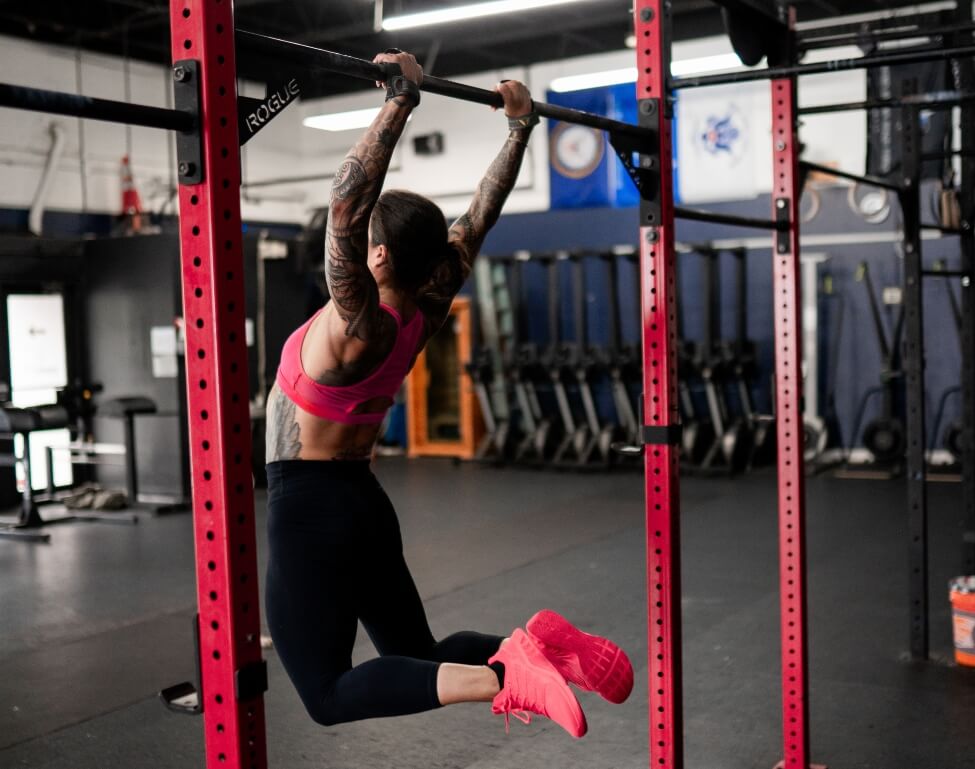
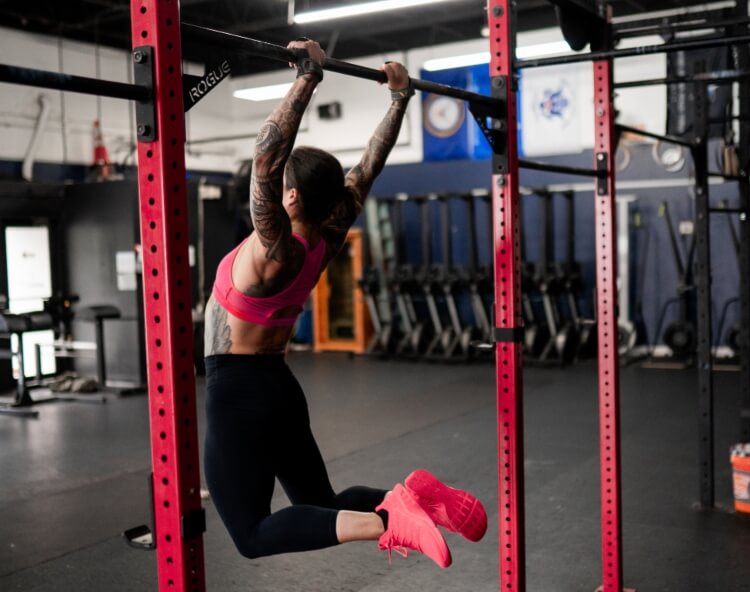
TIPS FOR SUCCESS AND STAYING CONSISTENT
There’s one thing that trumps all when it comes to making progress and that’s consistency. It’s not always straightforward, so here are a few quick hacks to help your focus and remind you how to stay consistent when following a hybrid training programme.
- Track Your Progress: Log your workouts to see how your strength and endurance are improving. Progressive overload is vital when it comes to making progress in training.
- Adjust as Needed: Listen to your body. If one area feels overly fatigued, shift your focus to another discipline or take a rest day.
- Stay Hydrated and Fuel Up Properly: Hybrid training burns a lot of energy, so eat a balanced diet rich in protein, complex carbs, and healthy fats.
- Find a Community: Training with others keeps you motivated and accountable. Look for local gyms or online communities of hybrid athletes.
- Rest & Recovery: Recovering between workouts is essential for you to maintain consistency in your hybrid training. Sleep and good nutrition play vital roles in enabling our bodies to recover from training and including time for flexibility and mobility exercises will help keep the body feeling ready for anything.
WHAT TO WEAR FOR HYBRID TRAINING
Now, if you’re new to hybrid training, you don’t need to head out and buy a whole new fitness wardrobe, you’ll most likely have some kit laying around you can make use of.
But you may find some benefits in wearing the right gear to get the most out of your hybrid training. Here’s a list of recommended sportswear and optional accessories to get the most out of your hybrid training;
- Supportive Footwear: A shoe designed for functional fitness, like the F-LITE MAX make for the perfect gym-based shoe. Providing stability and traction as you move from weights to HIIT. Separate endurance efforts may require a more discipline-specific shoe, such as the ROADFLY for your running sessions.
- Breathable Clothing: Hybrid training is hard work and some sessions will have you dripping with sweat. Being selective with your clothing, opting for breathable, lightweight fabrics will help avoid distractions and keep your focus on the session. PERFORMANCE T-SHIRTS are an ideal choice here.
- Smart Layering: With sessions often transitioning from gym to outdoors, choosing the right layers to keep you working at your optimal level is essential. A small, packable jacket can keep you dry, whilst reflective gear can ensure you stay visible when out on your endurance sessions.


IS HYBRID TRAINING RIGHT FOR YOU?
If you’re ready to break out of the single-focus training mould and indulge in the varietal affair of hybrid training, then it could be a great fit. It offers a balanced, holistic approach that not only builds strength and endurance but also keeps workouts fresh and engaging.
COMMON HYBRID TRAINING FAQS
1. Can beginners try hybrid training?
Absolutely! Start slowly with manageable weights and low-intensity cardio, then gradually build up as your fitness improves.
2. How many days a week should I do hybrid training?
3-5 days per week is a solid choice, with at least one full rest day for recovery.
3. Is hybrid training suitable for weight loss?
Yes, it combines strength and cardio, which helps build lean muscle and burn calories effectively.
4. Can I focus on one discipline more than the other?
Definitely! You can customise your programme to prioritise strength or cardio, depending on your goals.
5. What’s the best diet for hybrid athletes?
A balanced diet rich in protein, complex carbs and healthy fats will support both your energy needs and recovery.
Hybrid training is a dynamic, well-rounded approach to improving fitness and health, suited to anyone looking to enhance multiple areas of fitness simultaneously. With commitment, the right gear and a little patience, you’ll soon be hitting new highs as a hybrid athlete. Enjoy the ride.
